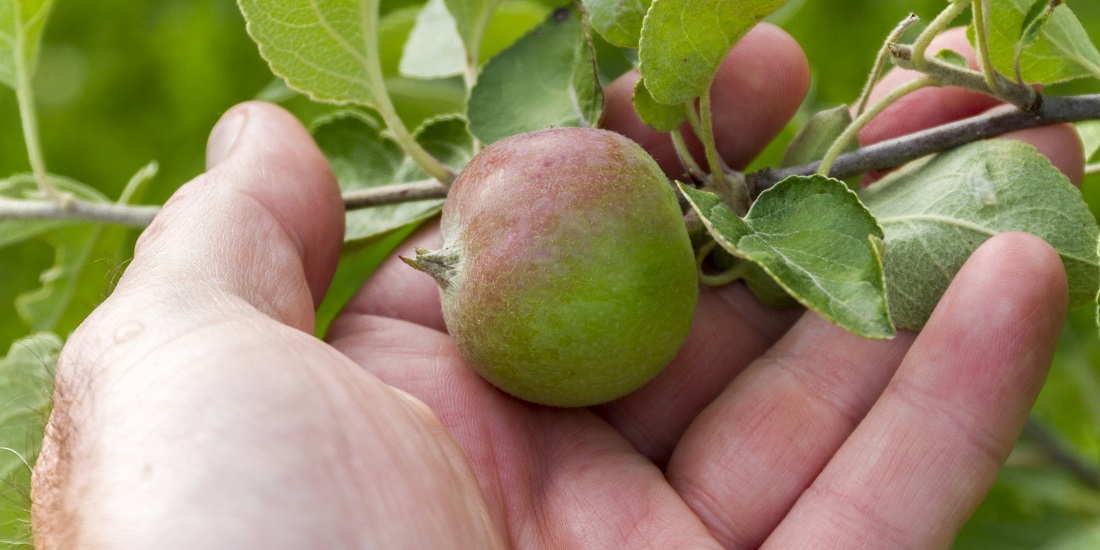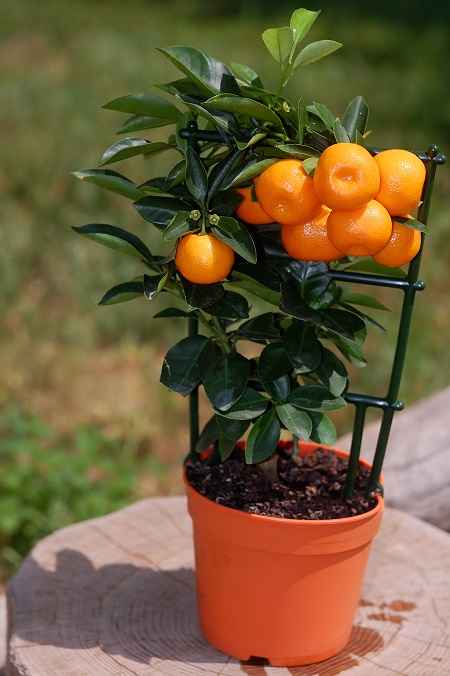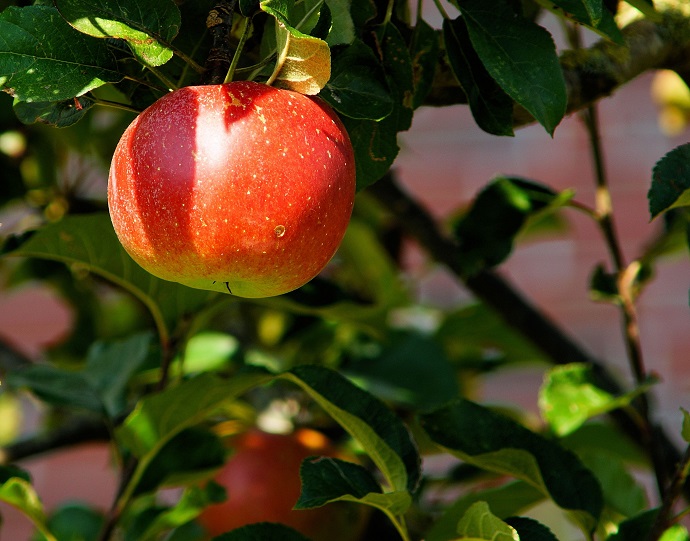Miniature Garden – Why Not Dwarf Fruit Trees

Fruit trees grown in a backyard are an excellent source of vitamins and minerals and their fruit can taste so much better than the fruit we buy in the store. If you grow your own fruit trees then you already know how great they are and you probably don’t rely on the grocery store for fruit. If you have a small garden where you grow some veggies and you’d like to have some fruit trees as well, but think you won’t have enough space for them, then consider growing dwarf fruit trees.
What are Dwarf Fruit Trees?
The answer is very simple. They are miniature trees which provide normal sized fruits and don’t take up much space. They can be grown in pots and some grow fruit all year round. You can grow them outside in the garden or in pots and you can move them around or even put them inside as a great decorative piece. They are the only trees that you can grow in your own apartment, which is great for those who don’t have access to a backyard garden.
Dwarf fruit trees usually don’t grow bigger than 8-10 ft (2.5-3 m) tall, and with regular pruning, you can keep them at the desired height.
Citrus trees, apple, pear, cherries, plums are the most commonly grown. They are suitable for beginner gardeners and are fairly easy to grow and meet their needs.

Advantages of Growing Dwarf Fruit Trees
You will experience several advantages when you grow dwarf fruit trees. You will see that they bloom and fruit faster than their normal size counterparts.
1. Because of their small sizes, the fruits are easy to harvest. You don’t have to climb a ladder or the tree itself to have access to their amazing fruit, which makes them safer.
2. Dwarf fruit trees are easy to maintain. You can reach them from all different angles when you need to care for them, spray, use pesticides (organic pest control is advised), or when you do the regular pruning.
3. Another advantage is that they are easy to grow in small gardens. They can be planted along alleys and on thin strips of land.
4. These small trees provide you with the option to grow them inside an apartment in pots when good growing conditions are met. This way, not only will you have a fruiting tree inside your apartment, but you can also use them as decorative plants.
5. Dwarf fruit trees provide a good alternative to normal sized trees in terms of yield. They bear a number of fruits comparable to a normal sized tree.
6. Because you can grow them yourself you have freedom of choice when treating certain diseases, pests, and fertilization. Therefore, you can pick some sustainable methods that will allow you to enjoy safer and healthier fruits.
7. An amazing advantage is that some dwarf trees are hybrid combinations of multiple fruit trees and you can find trees that will fruit apples, plums, and apricots at the same time! Amazing! You can have a high variety of fruit in a small space.
8. They have high longevity. Some dwarf trees are still healthy and produce good fruit even after 15 years.
Growing Dwarf Fruit Trees
Fruits and vegetables need good growing conditions. You can choose to grow your fruit trees in an aquaponic, hydroponic, or soil garden. What matters the most is that you take good care of your new pals and they will take care of you and your family by giving you tasty and healthy fruits in return. Today we will briefly describe growing the miniature fruit trees in soil and pots.
First of all, we just learned that these dwarf trees don’t need a lot of space to successfully grow. A small patch of soil will do. The soil has to be good quality because the roots of these trees will only grow in a limited size and they need to reach the nutrients quickly. The root system is fragile and will not make a good support for the tree if the area they grow in is windy. Try to protect them as much as you can from being pulled out from the soil by allowing them to rest on a support.
Put your dwarf tree in a generous sized hole in the soil, leveling it and covering it with soil up to the line you can see it was kept in the nursery. After planting in the soil or pot your tree will need to be watered in order to help it settle in and survive the process. Make sure you have a good drainage system because the dwarf trees won’t like their roots to be too moist. You can use different mulch materials and mulching techniques to fertilize the soil and improve its quality. Chopping-and-dropping as a size control and care method will make a good organic nutrient source.
Pruning and removing the unripe fruit will help the roots develop better.
An important aspect you need to keep in mind when deciding to grow dwarf fruit trees is that some of these trees are self-pollinating, that is, they can make fruit by themselves, and some are not self-pollinating, meaning that you will need to plant two different varieties to ensure fruit production.
When growing in pots or containers, pick large ones that are about 18 inches (45 cm) in diameter or more. Make sure there are drainage holes. Planting the dwarf trees in pots is the same as when planting them in soil. Cover the roots up to the nursery soil mark and water thoroughly.

Dwarf Fruit Trees for Beginners:
If you haven’t decided yet what are the best dwarf fruit trees to grow, here is a list of the safest miniature trees to grow as a beginner.
1. Dwarf citrus trees: are very good to start with, especially if the temperatures are not too low. In winter days, they would make great inside fruit trees. Some varieties to try are the Valencias dwarf orange tree, or the Eureka dwarf lemon tree.
2. Dwarf apple trees: they come in different varieties that are suitable for different climates. Some varieties to try are Yellow Delicious, Gala, Enterprise, Beverly Hills dwarf apple trees. When purchasing, keep the growing conditions in mind. Also, you will need two varieties to ensure pollination.
3. Dwarf pear trees: They need two varieties for pollination. Bartlett, Seckel or Kieffer dwarf pear trees are a great choice.
4. Dwarf peach trees: are best for summers and hot weather. These trees are self-pollinating. Most popular varieties include El Dorado, Southern Flame, and Garden Gold dwarf peach trees.
Check out our additional tips and tricks for a better garden:
https://sustainabilitybox.com/organic-gardening-organic-soil/
https://sustainabilitybox.com/amazing-diy-garden-pest-control-you-need-to-know/
https://sustainabilitybox.com/mulching-chop-drop/
Sources
http://homeguides.sfgate.com/dwarf-fruit-trees-63391.html
http://www.countryfarm-lifestyles.com/dwarf-fruit-trees.html
http://www.motherearthnews.com/organic-gardening/dwarf-fruit-trees-